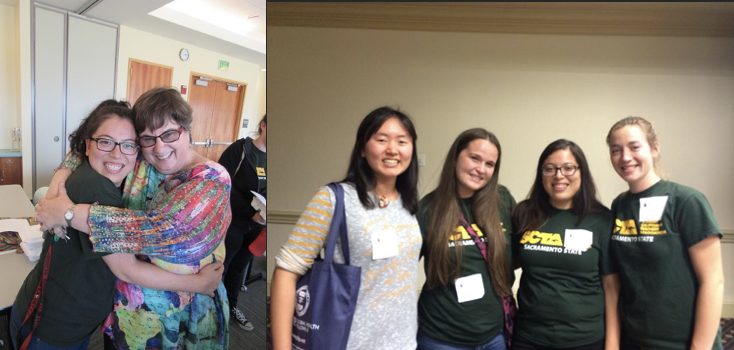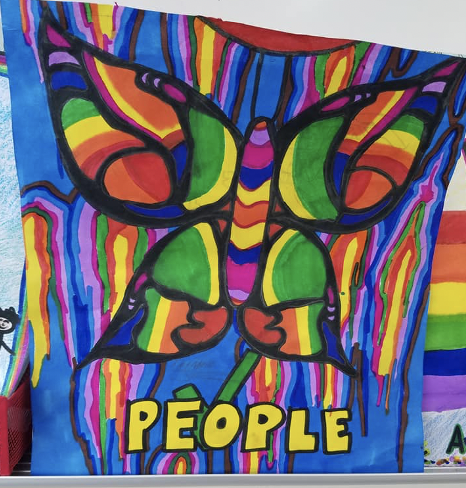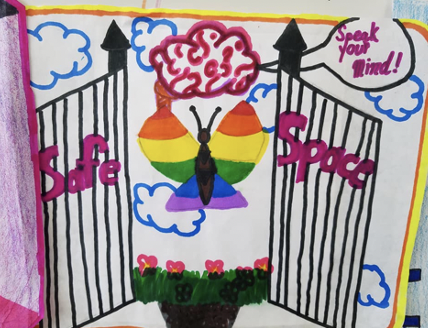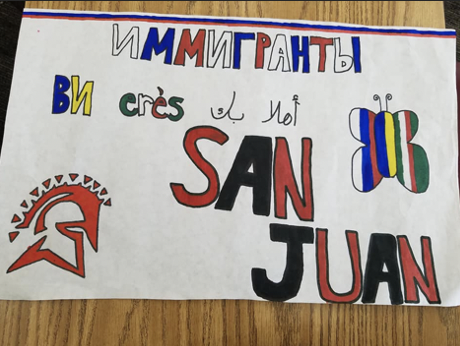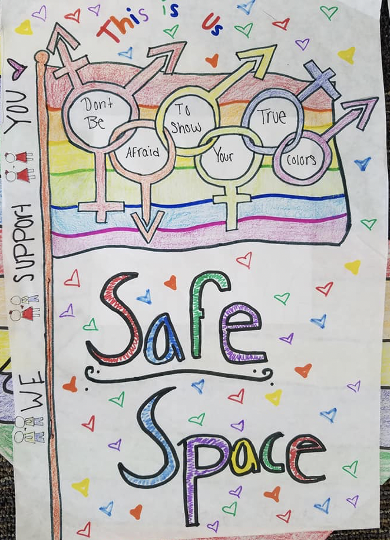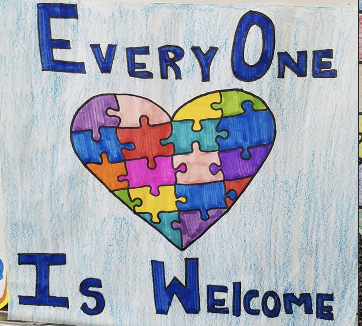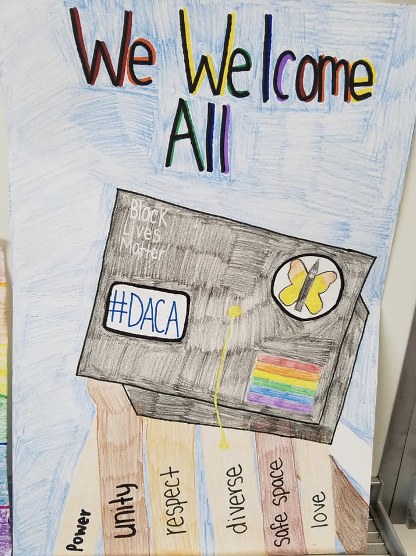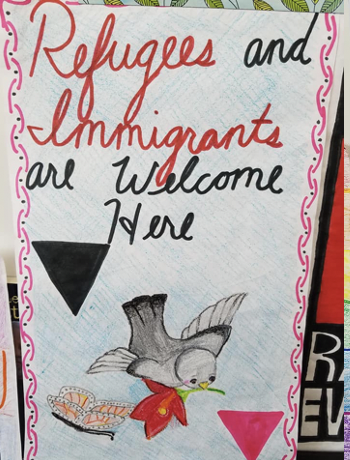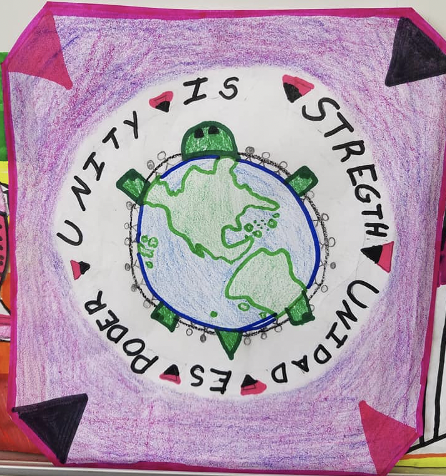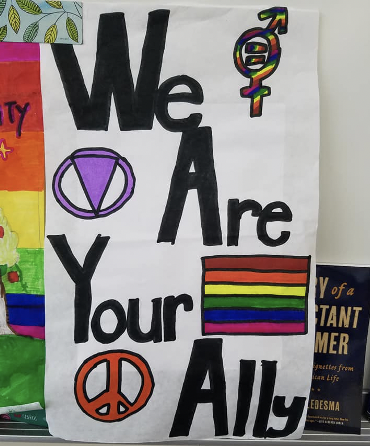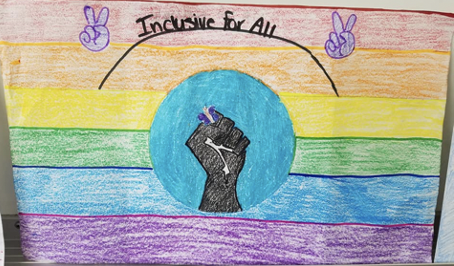What' I’ve Learned as an Ethnic Studies Educator
by Estibaliz Sanchez
During my undergrad at Sacramento State, I joined the Student California Teachers Association (SCTA) and learned about so many facets of education, but what it did most was solidify my desire to become a teacher. I received many opportunities to learn from amazing educators like NEA Teacher Excellence award recipient of 2014, Kimberley Gilles. She had such a huge impact in my teaching career. She gave a profound presentation on her Matthew Shepard unit taking a huge risk teaching what some people may call “controversial” material in school site that was not very receptive to LGBTQ+ content in the classroom. I always knew social justice was the foundation of my teaching, but once I saw what it looked like in a classroom, it made me fearless. I realized the potential impact my classroom could have in creating a safe space that allows students to be their authentic and true selves in the community without fear. Ethnic Studies presents that transformative work in the classroom.
The first advice I can give an educator ready for this work, is to have showcase social justice in the classroom. Sending positive and affirming messages to students on our walls is an initial step in building the strong relationships that allow students to be academic risk takers. My mission during my first year teaching was to gather safe space posters from rallies I attended, teacher conferences, and anything I could find on the internet. I began to take a lot of pride in the aesthetic of my room and even I began to feel a warm welcome as I walked into my room every morning.
As we moved along the school year in Ethnic Studies, I made every final assessment of each unit into an action-oriented project. From writing to our local state senators about the family separation along the border, creating online petitions to promote statues of POC, LGBTQ+, or other intersectional leaders, to writing protest music as a form of resistance and healing. As I approached my LGBTQ+ history unit I wanted to create connections that would build on allowing students to stand up to bullying. This is where I started to make connections from my time in SCTA and the work of Mrs. Gilles. Students dove deep into the meaning of the pride flag and other flags of LGBTQ+ identities. This included learning about the dark history behind the inverted triangle and how the community reclaimed it as a way to promote safe spaces. Students also learned the language used in various safe space posters that were provided online by the CTA.
Students began to realize that as cool as the posters looked, the message through the art was much deeper. We looked around my room to analyze varios posters I had and then reflected on our own school make-up. ‘Why don’t we have more safe space posters around our school, Ms. Sanchez?’ And there it was. The final assessment for our LGBTQ+ unit, safe space posters.
I gave students basic directions because art cannot be confined by too much structure. Students were directed to be intentional about the symbolism used in their creation including color and size. I told them our goal was to create safe space posters for teachers to be able to put in their classrooms. This gave our project meaning. These posters were going to make our entire school into a safe space. Some students were skeptical that their teachers were going to put their posters in their classrooms, but at the same time, it encouraged students to be very detailed in their work. Behind each poster, students wrote a one-page explanation and analysis of the message, purpose, and meaning behind their poster so the teacher who chose their poster would know more about the work put into them.
As we began our work, I noticed students who were uncomfortable at the beginning of our LGBTQ+ unit choose to create an LGBTQ+ safe space poster. I could see their empathy building and as they became more aware of how marginalized groups like LGBTQ+ students needed a safe space. Other students chose to send messages to our EL, refugee, immigrant communities, and our Black students to show they matter. Others chose to design inclusive messages for our students with disabilities.
Here are some examples of their work:
The final step was to continue placing students in leadership roles and to see the impact of their work on our site. Students were invited to come to our staff meeting and showcase their work while explaining the value of safe space posters in the classroom. I also presented to my colleagues on how having a student’s safe space poster in their classroom is an instant relationship builder for a student that they may have in their class next school year. My colleagues were excited to receive the work of our students. But what was more impactful was students seeing their work displayed in different classrooms, the principal’s office, the library, and counseling office. They saw their safe space posters change the culture of our school site. Now this school was theirs. I have been doing this unit for 4 years, and every year I get former students reflect on the pride in their work while in Ethnic Studies but I also see that our site still has their posters up many years later. A safe and welcoming space for all was made at our site because of the voice and leardership of our young scholars.
ABOUT THE AUTHOR
Estibaliz Sanchez, Ethnic Studies & AVID I | AP Psychology; AVID coordinator/AVID Club; Educational Leaders Club; LGBTQ+ Club; Latino Dreams Club; STEAMS club; San Juan High School
